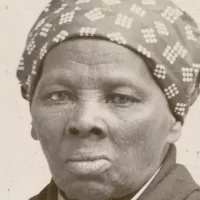League of Legends is a free-to-play multiplayer online battle arena (MOBA) video game developed and published by Riot Games, released in October 2009. Inspired by Defense of the Ancients, it allows players to control characters with unique abilities in team-based combat. The game is monetized through cosmetic character customizations and is available on Windows and macOS.
2007: League of Legends Demo at Game Developers Conference
In 2007, a League of Legends demo built in the Warcraft III game engine was shown at the Game Developers Conference. Beck and Merill had little success with potential investors, who were confused by the game's free-to-play business model and lack of a single-player mode.
October 7, 2008: League of Legends Announcement
On October 7, 2008, League of Legends was announced for Microsoft Windows.
April 2009: League of Legends Closed Beta Begins
In April 2009, closed beta-testing for League of Legends began, with 17 champions available upon launch.
October 2009: League of Legends Release
In October 2009, League of Legends was officially released by Riot Games. The game, inspired by Defense of the Ancients, adopted a free-to-play model monetized through purchasable character customization and was available on Windows and macOS.
October 27, 2009: League of Legends North America Release
On October 27, 2009, League of Legends was fully released in North America with 40 champions available. The game's full name was initially announced as League of Legends: Clash of Fates but the subtitle was dropped before launch.
2009: Criticism of Gameplay Elements
In 2009, League of Legends received criticism for requiring non-paying players to grind to unlock key gameplay elements. The game was considered underdeveloped, and a physical version was deemed inadvisable due to unavailable store credits. Launch features were removed from the beta, and players experienced long queue times and frustrating bugs.
2010: League of Legends Wins Game Developers Choice Awards
In 2010, League of Legends won four awards at the Game Developers Choice Awards. It received recognition for Best Online Technology, Game Design, New Online Game, and Visual Arts.
2011: League of Legends Wins Golden Joystick Award
In 2011, League of Legends won the Best Free-to-Play Game award at the Golden Joystick Awards.
2013: Comparison to Dota 2
In 2013, League of Legends was compared to Dota 2, with reviewers noting that Dota 2 characters are unlocked by default.
2013: Mac Version Release
In 2013, a Mac version of League of Legends was made available, expanding the game's platform availability beyond Microsoft Windows.
September 2014: Reboot of Fictional Setting
In September 2014, Riot Games rebooted League of Legends's fictional setting, removing summoners from the lore to avoid "creative stagnation" and hired Graham McNeill as a Warhammer writer. The Fields of Justice were replaced by Runeterra.
2014: In-Universe Setting
Before 2014, players existed in the League of Legends universe as "Summoners", commanding champions in arenas such as Summoner's Rift. The plot was described as having reductive "good versus evil" themes.
2014: Riot Games Forms Pentakill
In 2014, Riot Games launched its first music venture by forming the virtual heavy metal band Pentakill, promoting a skin line of the same name.
2014: Standardized Patch Cadence
In 2014, Riot standardized the patch cadence for League of Legends to approximately once every two or three weeks, changing the effectiveness of strategies within the game.
2014: Ultra Rapid Fire (URF) Mode Release
In 2014, Ultra Rapid Fire (URF) mode was available for two weeks as an April Fools' Day prank. In this mode, champion abilities have no resource cost, significantly reduced cooldown timers, increased movement speed, reduced healing, and faster attacks.
2014: Low Percentage of Paying Customers
In 2014, an Ubisoft analyst estimated that only 4% of League of Legends players were paying customers, lower than the industry standard, suggesting revenue optimization was not a priority.
April 2015: Riot Explains Ultra Rapid Fire Mode Absence
In April 2015, Riot disclosed that the Ultra Rapid Fire (URF) mode was not brought back due to its unbalanced design leading to player "burnout". The costs of maintaining and balancing URF were also too high.
2015: Comparison to Heroes of the Storm
In 2015, League of Legends was compared to Heroes of the Storm, with the latter noted for being more intentionally accessible.
2016: Introduction of Hextech Chests
In 2016, Hextech Chests, a loot box system, were introduced as purchasable virtual chests that provide random cosmetics.
2016: League of Legends Esports Viewership Outperforms Traditional Sports
In 2016, League of Legends esports events' online viewership and in-person attendance surpassed those of the National Basketball Association, the World Series, and the Stanley Cup.
2016: Estimated Monthly Revenue
In 2016, SuperData estimated League of Legends's monthly revenues at $150 million per month.
2016: League of Legends Music Team
In 2016, the League of Legends music team had four full-time composers and a team of producers creating audio for the game and its promotional materials.
2017: League of Legends Nominated for Best Esports Game
In 2017, League of Legends was nominated for Best Esports Game at The Game Awards.
2017: Pentakill's Grasp of the Undying Reaches Number One on iTunes Metal Charts
In 2017, Pentakill's second album, Grasp of the Undying, reached number one on the iTunes metal charts.
2017: Riot Games Reworks "Honor system"
In 2017, Riot reworked the "Honor system", allowing players to award teammates virtual medals after games for positive attributes. Acquiring these medals increases a player's "Honor level", rewarding them with free loot boxes over time.
2017: League of Legends Esports System Comprises 109 Teams
In 2017, the League of Legends esports system comprised 109 teams and 545 players.
2018: K/DA Debuts at League of Legends World Championship
In 2018, K/DA, a virtual K-pop girl group, debuted their first single, "Pop/Stars", at the League of Legends World Championship.
2018: Criticism of Female Characters
In 2018, League of Legends received criticism that female characters still resembled those in "horny Clash of Clans clones".
2018: League of Legends Nominated for Best Esports Game and Wins Sports Emmy Award
In 2018, League of Legends was nominated for Best Esports Game at The Game Awards. Also in 2018, the game won Outstanding Live Graphic Design at the 39th Sports Emmy Awards for the 2017 world championship, which featured a computer-generated dragon using augmented reality technology.
2018: Riot Games Announces Collaboration with Marvel Comics
In 2018, Riot Games announced a collaboration with Marvel Comics. The first comic was League of Legends: Ashe—Warmother, which debuted in 2018, followed by League of Legends: Lux that same year.
June 2019: Teamfight Tactics Release
In June 2019, Teamfight Tactics, an auto battler game, was released. Players build a team and position their units on a board to automatically fight against opponents. The game is available for iOS and Android, featuring cross-platform play with Windows and macOS clients.
2019: League of Legends Peak Popularity
In 2019, League of Legends peaked at eight million concurrent players, demonstrating its widespread popularity. This success led to tie-ins such as music, comic books, short stories, and the animated series Arcane, along with several spin-off video games.
2019: League of Legends Wins Best Esports Game and Best Esports Event
In 2019, League of Legends won Best Esports Game and Riot won Best Esports Event for the 2019 League World Championships at The Game Awards.
2019: 44 Million Peak Concurrent Viewers for League of Legends World Championship Finals
In 2019, Riot Games reported 44 million peak concurrent viewers for the League of Legends World Championship finals.
2019: Riot Games Creates True Damage Virtual Hip Hop Group
In 2019, Riot created a virtual hip hop group called True Damage. The group performed "Giants" during the opening ceremony of the 2019 League of Legends World Championship, alongside holographic versions of their characters. The in-game cosmetics promoted by the music video featured a collaboration with fashion house Louis Vuitton.
2019: Print Version of League of Legends: Lux Released
In 2019, a print version of League of Legends: Lux was released.
2019: Riot Games Announces New Games for League of Legends 10th Anniversary
In 2019, for the 10th anniversary of League of Legends, Riot Games announced several new games related to the League of Legends IP.
2019: League of Legends World Championship Viewership
The 2019 League of Legends World Championship registered over 100 million unique viewers, peaking at a concurrent viewership of 44 million during the finals, highlighting the game's significant presence in esports.
March 2020: Teamfight Tactics Released for iOS and Android
In March 2020, a stand-alone version of Teamfight Tactics was released for mobile operating systems iOS and Android.
April 2020: Legends of Runeterra Launched for Microsoft Windows
In April 2020, Legends of Runeterra, a free-to-play digital collectible card game featuring characters from League of Legends, launched for Microsoft Windows.
August 2020: K/DA Releases "The Baddest"
In August 2020, Riot Games released "The Baddest", the pre-release single for All Out, the debut EP from K/DA.
December 2020: Riot Games Announces Development of a League of Legends MMORPG
In December 2020, Riot Games announced that a massively multiplayer online role-playing game based on League of Legends is in development.
2020: League of Legends Wins Best Esports Game and Best Esports Event
In 2020, League of Legends won Best Esports Game and Riot won Best Esports Event for the 2020 League World Championships at The Game Awards.
2020: Valorant Release
In 2020, Riot Games released Valorant, a tactical shooter for which the Vanguard anti-cheat software was originally developed.
2020: 45 Million Peak Concurrent Viewers for League of Legends World Championship Finals
In 2020, Riot Games reported 45 million peak concurrent viewers for the League of Legends World Championship finals.
2020: Bilibili Acquires Streaming Rights for League of Legends International Events in China
In Fall 2020, Bilibili acquired the rights to stream international League of Legends events such as the World Championships and the Mid-Season Invitational in China for a three-year deal reportedly worth US$113 million.
April 2021: Riot Games Operates 12 Regional Leagues Internationally
As of April 2021, Riot Games operates 12 regional leagues internationally, four of which—China, Europe, Korea, and North America—have franchised systems.
2021: League of Legends Wins Best Esports Game
In 2021, League of Legends won Best Esports Game at The Game Awards.
2021: Ruined King: A League of Legends Story Released
In 2021, Ruined King: A League of Legends Story, a single-player, turn-based role-playing game, was released for PlayStation 4, PlayStation 5, Xbox One, Xbox Series X/S, Nintendo Switch, and Windows.
2021: Viego Introduced to Pentakill
In 2021, Viego was introduced to the virtual heavy metal band Pentakill.
2022: Announcement of Song of Nunu: A League of Legends Story
In 2022, Riot Games announced Song of Nunu: A League of Legends Story, a third-person adventure game, planned for release.
May 2023: Implementation of Vanguard Anti-Cheat Software
Since May 2023, League of Legends has been using Riot's custom always-online anti-cheat software, Vanguard, on Microsoft Windows devices. It was originally developed for Valorant. Following deployment, some players reported issues with Vanguard bricking their devices, though Riot stated it was caused by other problems.
November 1, 2023: Release of Song of Nunu: A League of Legends Story
On November 1, 2023, Song of Nunu: A League of Legends Story, a third-person adventure game, was released on Windows and Nintendo Switch.
2023: Riot Games Forms Heartsteel Virtual Boy Band
In 2023, Riot formed Heartsteel, a virtual boy band. Heartsteel's debut single "Paranoia" was released in October of that year.
2023: Gacha Game Mechanics Introduced
Since 2023, Riot has been using gacha game mechanics in Teamfight Tactics.
November 2024: Streamlining Player Rewards Announcement
In November 2024, Riot announced plans to streamline player rewards, causing widespread outrage due to the complexity of progression tracks and currencies. Players estimated needing over 800 hours to unlock a champion, described as a "worst PR disaster".
November 2024: Arcane Season Two Premieres
In November 2024, the second season of Arcane premiered to similar acclaim and later won seven Annie Awards.
2024: Revenue Generation Primarily from "Whales"
At the 2024 Summer Game Fest, game director Pu Liu stated that revenue is primarily generated by a "single-digit percentage" of players, known as whales.
2024: Introduction of Luxury Skin Tier
In 2024, Riot Games added a new luxury skin tier to League of Legends. These skins are acquired via a slot machine mechanic, guaranteeing the skin after a predefined number of attempts, costing between $200 and $430.
January 2025: Reversion of Reward Changes
In mid-January 2025, Riot partially reverted some of the reward changes, including halving the cost of purchasing a champion and the return of hextech chests which are loot boxes introduced in 2016. The game director admitted they "screwed up" due to a designer's error.
2025: Champion Count
As of 2025, League of Legends has 171 champions, and Riot Games periodically overhauls the visuals and gameplay of the oldest in the roster.
2025: Forthcoming Home Media Releases for Arcane Season Two
As of 2025, home media releases for the second season of Arcane are forthcoming.
2025: New Skin Tier and Monetization Controversy
In early 2025, Riot announced a new skin in a high-cost tier, which PC Gamer described as "whale chasing" and "psychological manipulation," adding to monetization controversies.
Mentioned in this timeline

Tencent is a Chinese multinational technology conglomerate headquartered in Shenzhen...

Ubisoft Entertainment SA is a French video game publisher with...

Nintendo is a Japanese multinational video game company based in...
Marvel Comics founded in as Timely Comics by Martin Goodman...

Riot Games founded in by Brandon Beck and Marc Merrill...
The Nintendo Switch is a video game console developed by...
Trending

6 months ago David Muir Discusses Life Off Camera as 'World News Tonight' Dominates Ratings.

25 days ago Martha Stewart's Holiday Collection Returns for 2025: Decor and Dining Favorites!

Ladd McConkey is a professional American football wide receiver currently playing for the Los Angeles Chargers He was drafted in...

Jason Pierre-Paul is an American professional football linebacker who has achieved considerable success in the NFL Drafted by the New...
21 days ago Trump defends Tucker Carlson's Nick Fuentes interview amid antisemitism concerns.
Fort Stewart is a U S Army post primarily located in Liberty and Bryan counties in Georgia also extending into...
Popular
Matt and Ross Duffer known as the Duffer Brothers are...
Aftyn Alyssa Behn is an American politician currently serving as...

Candace Owens is an American conservative political commentator and author...

Ilhan Omar is an American politician currently serving as the...

XXXTentacion born Jahseh Dwayne Ricardo Onfroy was a controversial yet...

Harriet Tubman was a pivotal American abolitionist and social activist...

